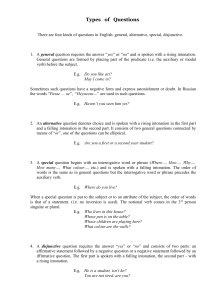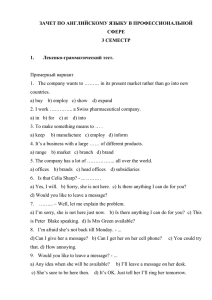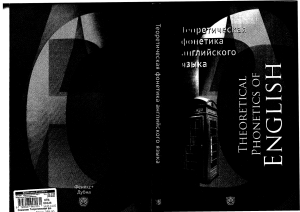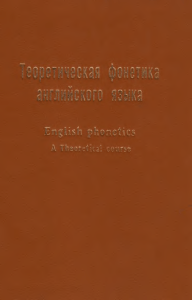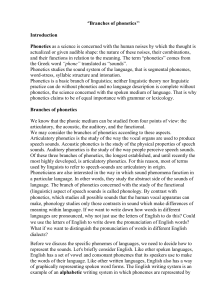МЕТОДИЧЕСКИЕ РЕКОМЕНДАЦИИ по дисциплине «Практическая фонетика»
реклама
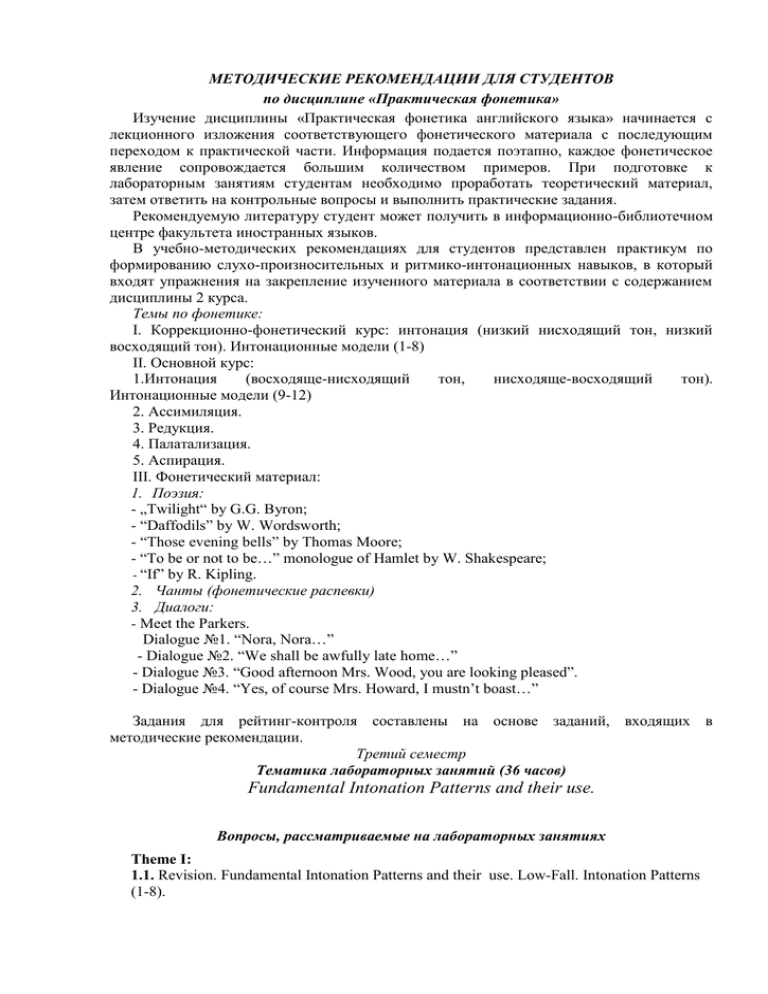
МЕТОДИЧЕСКИЕ РЕКОМЕНДАЦИИ ДЛЯ СТУДЕНТОВ по дисциплине «Практическая фонетика» Изучение дисциплины «Практическая фонетика английского языка» начинается с лекционного изложения соответствующего фонетического материала с последующим переходом к практической части. Информация подается поэтапно, каждое фонетическое явление сопровождается большим количеством примеров. При подготовке к лабораторным занятиям студентам необходимо проработать теоретический материал, затем ответить на контрольные вопросы и выполнить практические задания. Рекомендуемую литературу студент может получить в информационно-библиотечном центре факультета иностранных языков. В учебно-методических рекомендациях для студентов представлен практикум по формированию слухо-произносительных и ритмико-интонационных навыков, в который входят упражнения на закрепление изученного материала в соответствии с содержанием дисциплины 2 курса. Темы по фонетике: I. Коррекционно-фонетический курс: интонация (низкий нисходящий тон, низкий восходящий тон). Интонационные модели (1-8) II. Основной курс: 1.Интонация (восходяще-нисходящий тон, нисходяще-восходящий тон). Интонационные модели (9-12) 2. Ассимиляция. 3. Редукция. 4. Палатализация. 5. Аспирация. III. Фонетический материал: 1. Поэзия: - „Twilight“ by G.G. Byron; - “Daffodils” by W. Wordsworth; - “Those evening bells” by Thomas Moore; - “To be or not to be…” monologue of Hamlet by W. Shakespeare; - “If” by R. Kipling. 2. Чанты (фонетические распевки) 3. Диалоги: - Meet the Parkers. Dialogue №1. “Nora, Nora…” - Dialogue №2. “We shall be awfully late home…” - Dialogue №3. “Good afternoon Mrs. Wood, you are looking pleased”. - Dialogue №4. “Yes, of course Mrs. Howard, I mustn’t boast…” Задания для рейтинг-контроля составлены на основе заданий, входящих в методические рекомендации. Третий семестр Тематика лабораторных занятий (36 часов) Fundamental Intonation Patterns and their use. Вопросы, рассматриваемые на лабораторных занятиях Theme I: 1.1. Revision. Fundamental Intonation Patterns and their use. Low-Fall. Intonation Patterns (1-8). 1. Intonation and its components. Intonation – four communicative types of sentences. Methods of indicating intonation on the staves. 2. The general characteristics of intonation patterns. 1.2. Sounds: [k, g, t, d, ,n, s, z, p, b, m, i, e]. [1, f, v ]. Diphthongs [i:, a: , u: ]. Theme II: Fundamental Intonation Patterns and their use. High-Fall. High-Rise. 1. 2. Intonation Patterns (9-12). Compound Tunes. High-Rise. The general characteristics of intonation patterns. Четвертый семестр Тематика лабораторных занятий (36 часов) Assimilation. Reduction. Palatalization. Aspiration. Theme III: Assimilation. Reduction. Palatalization. Aspiration. 1. 2. 3. 4. Assimilation. Degrees of assimilation. Directions of assimilation. Palatalization. General characteristics. Reduction. Strong and week forms. Aspiration. Strong and weak forms. Контрольные вопросы и практические задания к лабораторным занятиям Theme I: Revision. Fundamental Intonation Patterns and their use . Low-Fall. 1.1. Intonation and its components. Questions and tasks: 1. Give the definition of intonation. 2. Which intonation component is also called melody? 3. Which intonation component is also called melody? 4. Which intonation component shows the importance of some words within the sentence? 5. What is the speech timbre? 6. What is the pre-head? 7. What is the nucleus? 1.2. Intonation Patterns (1-8) Questions and tasks: 1. What attitudes of the speaker are expressed by the Low Level Head + Low Fall? 2. What are the attitudes expressed in Patterns One, Two? 3. What intonation pattern is often used in leave-takings and in bright and friendly greetings? 4. What intonation pattern is often heard in greetings? 5. What attitudes of the speaker are expressed by the Low Level Head + Low Rise? Theme II (Main Course): Fundamental Intonation Patterns and their use. Intonation Patterns 1-9. Compound Tunes. High-Rise. Questions and tasks: 1. What intonation pattern is used in questions, echoing, calling for repetition or additional information? 2. Suppose general questions are asked with the High Fall. How would they sound? 3. How do intonation groups and sentences sound being pronounced with the Low Ascending Head + High Fall? 4. If you want to sound apologetic, grateful, appreciative, what pattern would suit this occasion? 5. If you want to add vivacity, liveliness or excitement to the attitudes, what pattern would suit this occasion? Theme III: Assimilation. Reduction. Palatalization. Aspiration. Questions and tasks: 1. Give the definition of assimilation. 2. What kind of assimilation affects the alveolar articulation of the [d, t, n] and [l], when they are followed by [θ] or [ð]? 3. What consonant in the sentence “Call the boy.” Is affected by regressive assimilation? 4. Comment on the case of assimilation: does she. 5. What phenomenon is called ‘reduction’? 6. Name the sounds which are commonly found in the unstressed syllables. 7. What degrees of reduction do you know? 8. Give examples to illustrate the verb to do in thee reduced and non-reduced forms. 9. What is aspiration? 10. Are Russian stops aspirated? 11. Suppose a student of English makes [p,t,k] non-aspirated? What would you tell him to do in order to correct the error? 12. How do the voiced and voiceless stops influence the length of preceding vowels? 13. What is palatalization? 14. Are English stops palatalized? 15. When English slops are a bit clearer: before front, close or mid-open vowels, or before back vowels?
